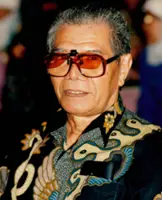‘After years of working with the deaf, I have realised the importance of highlighting their abilities rather than their disabilities,’ says Lee (centre). Photos: The Star/Chan Tak Kong
For the past 16 years, visual artist and drummer Lee Mok Yee has been heading to YMCA in Brickfields, Kuala Lumpur, every Monday night to conduct classes for a special group of students.
As the coach of DeafBeat, Malaysia’s first deaf Chinese drum troupe, Lee doesn’t mind going the extra mile for a good cause. He has eight deaf students under his wing, and he wants to showcase their abilities and foster a world of inclusive artistic expression.





